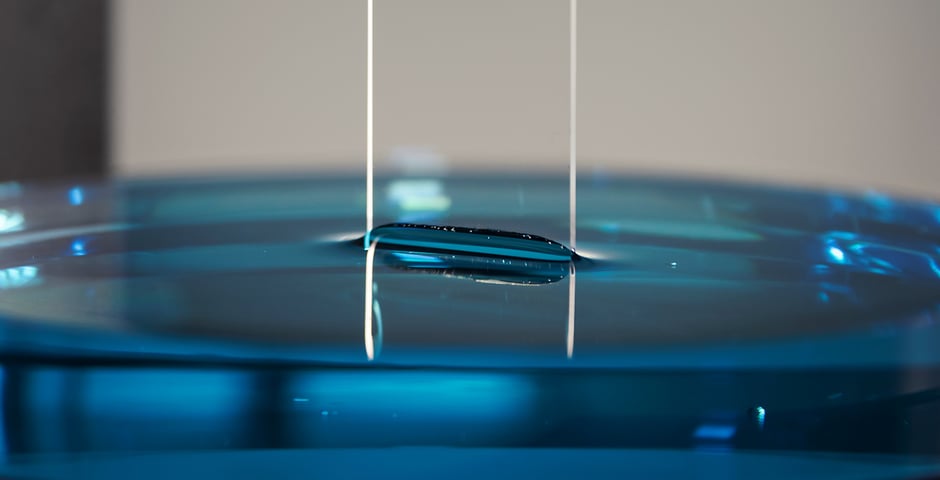
Nanoparticle thin films are finding applications in various areas where functional coatings such as antireflection, antifogging or self-cleaning properties are needed. They have also been used to produce protective layers to e.g. prevent corrosion of the underlying metal. How to produce these nanoparticle thin film needs to be considered. With several different methods available it can be difficult to choose which one is best for your application. Dip coating offers one of the simplest methods to coat the substrate with nanoparticles when the packing density of the produced film is not an issue. To see our nanoparticle coating solutions, go to the product page.
Dip coating process
In theory, dip coating is very simple. The sample is perpendicularly dipped into a solution containing the nanoparticles. The sample is let to stay immersed in the solution to allow some time for nanoparticle deposition. After this, the sample is withdrawn out from the solution and let to dry.
However, there are several factors that need to be considered when controlled deposition is needed.
The process is divided into three steps.
Immersion of the substrate is typically done perpendicularly although a different type of angled immersion has also been tested for asymmetrical deposition thicknesses. The immersion is controlled by a computer for automated dipping and constant dipping speed. After immersion, the substrate is kept in the solution to allow enough time for complete wetting of the substrate. Here, the functionality of the both, initial substrate surface and the nanoparticle surface, plays an important role.
After the immersion time, the substrate is pulled out from the solution. The speed at which the substrate is pulled is meaningful. Higher withdrawal speed leads to thicker coatings [1]. The speed should be thus kept constant the whole length of the substrate and any undesired vibrations should be avoided.
The concentration of the solution is also an important parameter. Too low concentration will lead to an uneven coating of the substrate. High concentration solution tends to cause aggregation of nanoparticles already in the solution phase leading to multi-layered assembly of nanoparticles.
Controlled multi-layer deposition is also possible by dipping the substrate several times. You can also produce multi-layers with variable layer materials by using multi-vessel dip coaters with different dipping solutions.
The excess liquid, e.g. water, is also drained at this point.
Evaporation stage is for the solvent to evaporate from the produced film. The evaporation time depends on the solvent used and can be promoted by heating of the substrate. If very volatile solvents are used, such as alcohols, the evaporation will start already at the drainage stage.
As already discussed, dip coating offers one of the simplest method for nanoparticle deposition. However, when choosing the method, it is important to consider which method is best suited for your application. To get an overview of different nanoparticle deposition methods, please download a review below.
[1] L. Landau, B., and G. Levich, "Dragging of a liquid by a moving plate", Dynamics of Curved Fronts 1988, 141-153.
Nanoparticle thin films are gaining recognition and use in various products and applications including displays, sensors, and energy storage.
LB films offer various opportunities for the creation of biosensors.
Roll-to-roll LB technology combines the benefits of Langmuir-Blodgett to high throughput and the possibility to use flexible substrates.
Spin coating is one of the most used thin-film coating technique and for this reason, any new technique is typically compared to it.
Introduction to graphene and its deposition techniques
This blog shows that nanoparticle deposition can improve thin film solar cell efficiency.
Describes the most common nanolithography methods to produce nanosized features
Nanoparticle lithography is a promising fabrication technique. Unlike other techniques, it has a potential to be performed on curved surfaces.
